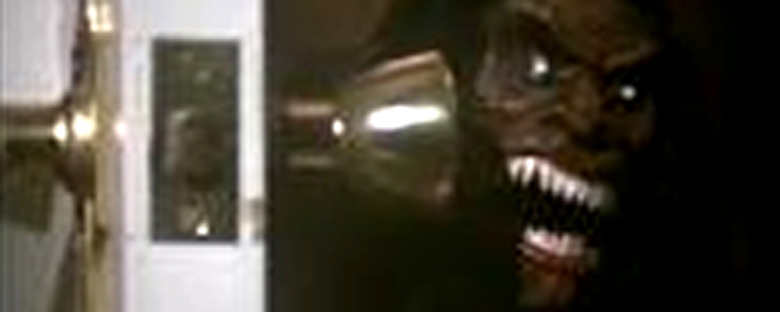Reviews
Dan Curtis
USA, 1975
Credits
Review by Rumsey Taylor
Posted on 10 October 2004
Source Anchor Bay Entertainment DVD
Related articles
features: October: 31 Days of Horror
The notion of horror on television is somewhat oxymoronic, for the obvious compromises the smaller format inherits serve to disenable the horror mechanisms afforded in film. Namely, it is difficult for suspense to be drawn out in television horror with the escalation it has in film. Television (and television films) does not foster suspense in its very form: it is more rhythmic, divided into eight or nine minute pieces, dispersed evenly in between advertisements. Moreover, horror is essentially fueled by contents and themes that the viewer is to consider taboo or frightening, and these elements affront the stricter television censors; at least, elements of horror are not as visceral on television as they are in film.
However, television horror possesses strengths because of its truncated length. These are generally short films, conditioned by abbreviation and immediacy, and are usually a part of some anthological series, many (if not all) of which an emulation of the formula proven popular and successful in The Twilight Zone. The concept is one of absolute simplicity: in thirty minutes stir up a conflict and end with an unexpected twist. The advantages to this diminutive format are in the pacing, and, in regard to horror specifically, the little time available to do anything but scare. Generally the characters lack development and the twist endings are usually forced, but the format possesses a few noteworthy and radiant gems.
1975’s Trilogy of Terror is one such unusually successful – if not underseen – example. The made-for-television film was helmed by Dan Curtis, who had previously directed episodes of Dark Shadows (as well as, apparently, a slew of made-for-television horror films), and it consists of three episodes starring cult icon Karen Black in four roles, each displaying her breadth as a character actress.
Each woman (or women) Black inhabits is of varying confliction. In the first episode, Julie, Black is a precariously attractive English teacher whose student, a photo hobbyist, begins blackmailing her. The second, Millicent & Therese, has Black in both title roles as a pair of physically identical and personably different sisters, one seductive, the other both erudite and abstinent. It is the final episode, Amelia, that secures the film’s influence, entertainment, and suspense uncharacteristic of the medium.
The notorious mainstay of this series, the final episode is a masterpiece of abbreviation; it is comprised of one actress, one set, and one vicious prop. It begins with Amelia returning home with a Zuni hunting fetish doll, a gift for her boyfriend. It is a despicable item, with an open grin of razor teeth, black eyes, and an actual spear in hand. It is equipped with a golden chain around its waist, said to retain the Zuni hunter’s hostile spirit inside the doll. This chain is, of course, inadvertently removed, and Amelia returns to her living room after a bath and finds the prophetic chain unlinked and in the place of the missing doll.
The atmosphere becomes one of urgent panic. The doll begins chasing Amelia about her apartment (the grumbling voice it has is sinister in itself), and the camera relays its point of view efficiently in a series of breakneck, low-angle tracking shots that scream from room to room – once it begins moving, the camera is seldom static. This episode lasts 22 minutes, and in that duration contains an incessant pace, and ends with a sufficiently foreboding image.
The Trilogy of Terror’s final episode’s innovation is diluted, at least in part, by the commonness of Evil point of views and even homage (the fetish doll sequence has been parodied in The Simpsons, and resurrected in 1996’s Trilogy of Terror II). Foremost, its camerawork noticeably presages The Evil Dead’s rampant cinematography. At the time, however, such horror was exceptional, and especially so on television.
We don’t do comments anymore, but you may contact us here or find us on Twitter or Facebook.



